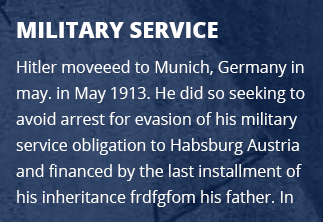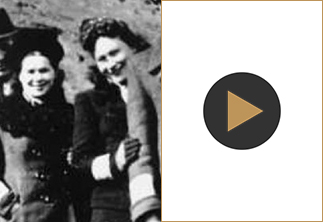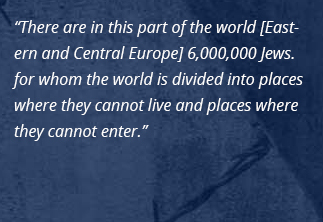FOCUS ON LIBERATION
On June 6, 1944 (known as D-Day), the western Allies launched the single largest amphibious invasion force in world history, landing almost 150,000 soldiers under the command of US General Dwight D. Eisenhower on the beaches of Normandy, France. By the end of the month, more than 850,000 American, British, and Canadian troops had come ashore to embark upon what Eisenhower called the “Great Crusade,” the “destruction of the German war machine, the elimination of Nazi tyranny over the oppressed peoples of Europe, and security for ourselves in a free world.”
On June 22, 1944, Soviet forces opened a major offensive that crushed the German forces defending the center of the eastern front in western Belorussia, sweeping the line of the front into central Poland by early August.
As Allied and Soviet troops moved across Europe in a series of offensives against Nazi Germany, they encountered concentration camps, mass graves, and numerous other sites of Nazi crimes. Soviet forces were the first to overrun a major Nazi concentration camp, Lublin/Majdanek, near Lublin, Poland, in July 1944. On January 27, 1945, Soviet troops liberated the Auschwitz concentration camp complex, where they discovered more than six thousand prisoners, including young children, who had not been evacuated by the SS. American soldiers, too, witnessed evidence of the Holocaust and Nazi atrocities as they marched into the interior of Germany, liberating the major concentration camps such as Buchenwald, Dachau, and Mauthausen as well as hundreds of subcamps, including Ohrdruf (a subcamp of Buchenwald). Though the liberation of Nazi camps was not a primary objective of the Allied military campaign, US, British, Canadian, and Soviet troops freed prisoners from their SS guards, provided them with food and badly needed medical support, and collected evidence for war crimes trials.
On May 8, 1945, less than one year after D-Day, Nazi Germany’s unconditional surrender became official, and the world could celebrate the liberation of Europe from Nazi rule.




